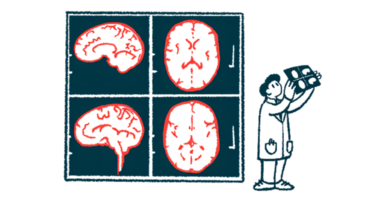Uric Acid May Help to Protect Neurons, Ease Non-motor Symptoms

Among people with Parkinson’s disease, those with low blood levels of uric acid — a natural antioxidant — tend to have more severe non-motor symptoms like anxiety, depression, and cognitive dysfunction, a study indicates.
It also showed a link between uric acid levels and gray matter volume in the brain.
This work “is the first report examining the relationships between serum UA [uric acid] and clinical manifestations and imaging features in PD [Parkinson’s disease] patients,” according to its researchers.
The study “Low serum uric acid levels are associated with the nonmotor symptoms and brain gray matter volume in Parkinson’s disease,” was published in Neurological Sciences.
Uric acid is a waste product produced when the body breaks down certain molecules, but it still serves a function: namely, uric acid is an important antioxidant in the body. Antioxidants, as the name suggests, are substances that can reduce oxidative stress — a type of cellular damage thought to be involved in the development and progression of many diseases, including Parkinson’s.
Researchers in China analyzed the serum (blood) uric acid levels in 88 people with Parkinson’s and 68 similarly aged controls without the disease. Among the Parkinson’s patients, 56 were in a relatively early stage of the disease, while the remaining 32 had middle-to-late stage disease.
“Studies have shown that UA levels are significantly related to the severity of dopaminergic impairment in the [brain]. Therefore, we hypothesized that serum UA levels gradually decrease as PD progresses,” the researchers wrote.
Statistical analyses showed that, on average, uric acid levels were significantly lower in those with Parkinson’s than in those without the disease.
More specifically, uric acid levels were significantly lower in individuals with early Parkinson’s relative to healthy controls. Its levels in patients with more advanced disease, in turn, were significantly lower than its levels in early Parkinson’s patients.
The researchers also looked for correlations between uric acid levels and various symptoms and signs of Parkinson’s, assessed with standardized questionnaires and appropriate medical tests.
Results indicated that low uric acid levels were statistically linked to greater severity for several Parkinson’s symptoms, including depression, anxiety, cognitive dysfunction, apathy, and dysphagia (swallowing difficulty).
“These findings indicate that monitoring serum UA levels may be a potential biomarker or treatment strategy for PD,” the researchers wrote.
Additionally, a significant correlation was evident between uric acid levels and brain grey matter among Parkinson’s patients: individuals with low uric acid levels tended to have less grey matter, and vice versa. Grey matter is the part of the brain that houses the bodies of neurons (nerve cells); the other type of brain tissue — white matter — houses the projections neurons use to connect to each other.
Based on these results, “we speculate that UA, as a protective substance in PD, has a broad protective effect on brain neurons,” the researchers wrote.
A notable limitation of this analysis is that the researchers were testing for correlations — that is, statistically meaningful associations. By definition, this kind of analysis cannot identify cause-and-effect relationships: it is plausible that reduced uric acid levels lead to worsening symptoms, but it is also possible that the neurological damage that causes Parkinson’s symptoms to worsen also reduces levels of uric acid.
“To clarify the clinical significance of serum UA concentration in PD patients, larger clinical and preclinical studies are needed to further explore the potential mechanism underlying changes in serum UA levels in PD,” the team concluded.








